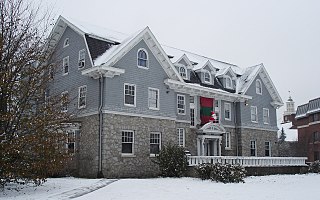
North American fraternity and sorority housing refers largely to the houses or housing areas in which fraternity and sorority members live and work together. In addition to serving as housing, fraternity and sorority housing may also serve to host social gatherings, meetings, and functions that benefit the community.
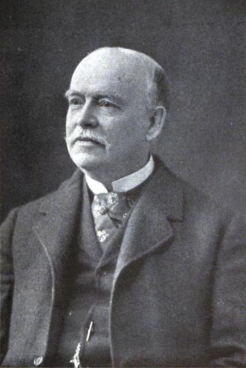
Josiah Cleaveland Cady or J. Cleaveland Cady, was an American architect known for his designs in Romanesque and Rundbogenstil styles. He was also a founder of the American Institute of Architects.
Dartmouth College is host to many fraternities and sororities, and a significant percentage of the undergraduate student body is active in Greek life. In 2005, the school stated that 1,785 students were members of a fraternity, sorority, or gender-inclusive Greek house, comprising about 43 percent of all students, or about 60 percent of the eligible student body. Greek organizations at Dartmouth provide both social and residential opportunities for students and are the only single-sex residential option on campus. Greek organizations at Dartmouth do not provide dining options, as regular meal service has been banned in Greek houses since 1909.

St. Anthony Hall or the Fraternity of Delta Psi is an American fraternity and literary society. Its first chapter was founded at Columbia University on January 17, 1847, the feast day of Saint Anthony the Great. The fraternity is a non–religious, nonsectarian organization. In 1879, William Raimond Baird's American College Fraternities characterized the fraternity as having "the reputation of being the most secret of all the college societies." A modern writer says the fraternity is "a cross between Skull and Bones and a Princeton eating club, with a large heaping of Society and more than a dash of Animal House." Nearly all chapters of St. Anthony Hall are coed.
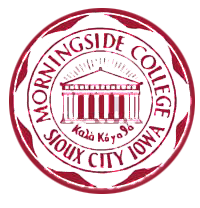
Morningside University is a private university affiliated with the United Methodist Church and located in Sioux City, Iowa. Founded in 1894 by the Methodist Episcopal Church, Morningside University has 21 buildings on a 68-acre (280,000 m2) campus in Sioux City. The Morningside College Historic District, which includes most of the campus, is on the National Register of Historic Places. Morningside College officially became Morningside University on June 1, 2021.

Delta Phi (ΔΦ) is a fraternity founded in 1827 at Union College in Schenectady, New York consisting of ten active chapters along the East Coast of the United States. The fraternity also uses the names "St. Elmo," "St. Elmo Hall," or merely "Elmo" because of its relation to Erasmus of Formia with some chapters known almost exclusively by one of these names on their respective campuses. Delta Phi was, after the Kappa Alpha Society and Sigma Phi Society, the third and last member of the Union Triad.
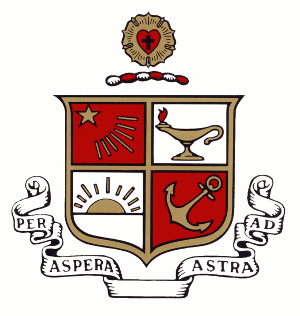
Beta Sigma Psi National Lutheran Fraternity (ΒΣΨ), commonly known as Beta Sig, is a United States social organization for Lutheran college men. Founded at the University of Illinois in 1925, the fraternity has more than 7,500 initiated members. It has twelve chapters, primarily in the mid-west, and over 300 undergraduate members.
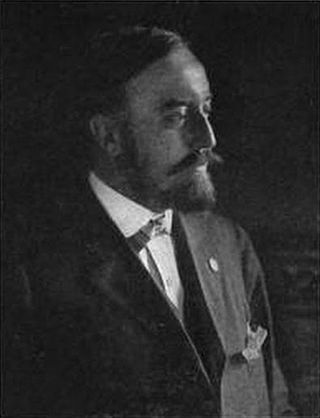
Henry Hornbostel was an American architect and educator. Hornbostel designed more than 225 buildings, bridges, and monuments in the United States. Twenty-two of his designs are listed on the National Register of Historic Places, including the Oakland City Hall in Oakland, California and the Soldiers and Sailors Memorial Hall and Museum and University Club in Pittsburgh, Pennsylvania.
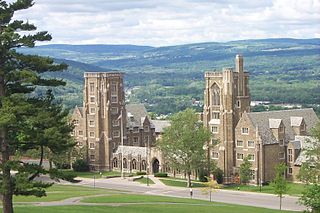
West Campus is a residential section of Cornell University's Ithaca, New York campus. As defined by the 2008 Master Plan, it is bounded roughly by Fall Creek gorge to the north, West Avenue and Libe Slope to the east, Cascadilla gorge and the Ithaca City Cemetery to the south, and University Avenue and Lake Street to the west. It now primarily houses transfer students, second year students, and upperclassmen.
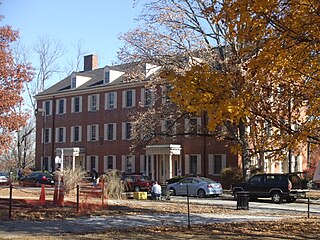
Elliott and Stoddard Halls are the two oldest remaining buildings on Miami University's Oxford Ohio campus today. Built in 1825 (Elliott) and 1836 (Stoddard), they were designed in the Federal style and modeled after Connecticut Hall at Yale University. They continue to be used as dormitory buildings, making them the two oldest college dormitories still in use in Ohio. They were the original dormitories on the campus and were built to house students who attended classes at Miami's campus. They have both been through a number of renovations, most recently in 2011. The dorms are located in between the two academic quads located in the center of Miami's campus. They face another landmark on the campus, the Miami University seal. Over time they have become landmarks on the campus and are considered two of the most prestigious dorms to live in. They are also listed on the National Register of Historic Places. Today, they house students in the Scholar Leaders program. The buildings are named for early Miami professors Charles Elliott and Orange Nash Stoddard.

The Phi Gamma Delta Fraternity House in Minneapolis, Minnesota is the University of Minnesota chapter house of Phi Gamma Delta. The house, located just across University Avenue from the East Bank Campus, is listed on the National Register of Historic Places for its distinctive architecture, as well as its role in the development of fraternity housing in Minnesota.

Over 8,000 undergraduate and graduate students live in campus housing at the University of North Carolina at Chapel Hill during a regular school year. Forty residence halls are grouped into 16 residential communities across campus.

St. Anthony Hall House is a historic fraternity house located in the University City neighborhood of Philadelphia, Pennsylvania. It is the Delta chapter house for the social and literary Fraternity of Delta Psi for the University of Pennsylvania. It was added to the National Register of Historic Places in 2005.
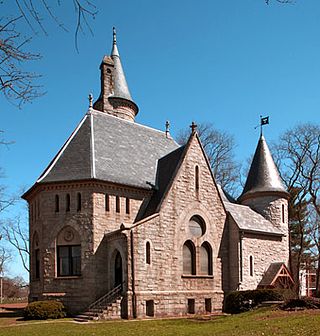
The Saint Anthony HallTrinity College chapter house is an historic fraternity building located at 340 Summit Street in Hartford, Connecticut. Built between 1877 and 1878, it is a significant early work of the American architect J. Cleaveland Cady. The building was listed on the National Register of Historic Places in November 1985.
George Carnegie Palmer, was an American architect who specialized in civic and academic buildings across the United States. He best known for his work with the architect Henry F. Hornbostel. By 1904, Palmer & Hornbostel ranked "among the leading architects in the United States."





















